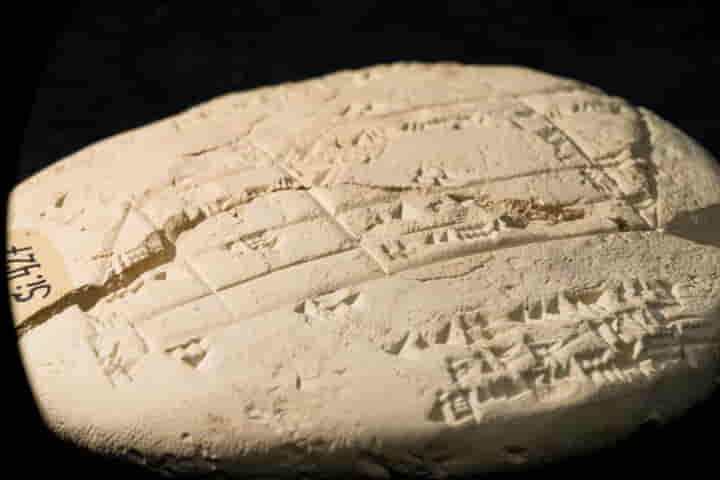In what proves the use and usefulness of mathematics in ancient times, a mathematician from Australia discovered on an engraved 3,700-year-old Babylonian clay tablet, applied geometry. This probably could be the oldest example known so far of applied geometry.
Dating back from the Old Babylonian period which is between 1900 and 1600 BCE, this tablet was found in the late 19th Century in what is at present known as Iraq.
The tablet after discovery was kept in the Istanbul Archaeological Museum and that is where it was tracked down by Dr Daniel Mansfield from the University of New South Wales.
Also read: Recent discoveries from port city Thonis-Heracleion add lustre to Egypt's riveting past
Earlier too, Mansfield along with an Associate Professor from UNSW, Norman Wildberger, had identified another Babylonian tablet. This tablet showed the world’s most accurate and oldest trigonometric table. The two then had conjectured that the tablet probably was put in some practical use for some activity like construction or surveying.
Named as Plimpton 322 that clay tablet, described right-angle triangles using Pythagorean triples: three whole numbers in which the sum of the squares of the first two equals the square of the third.
In an article in the Guardian, Mansfield said: “You don’t just accidentally come up with trigonometry, you’re usually doing something practical.”
Plimpton 322 set Mansfield thinking and put him on the path to find out other such tablets belonging to the same period which also had Pythagorean triples. This quest finally brought him to Si.427.
According to Mansfield: “Si.427 is about a piece of land that’s being sold.”
The tablet inscribed with the cuneiform script — with its characteristic wedge-shaped indentations – provides details about a field which has marshy areas, threshing floor and also a tower nearby.
The field which is depicted by rectangles have their opposite sides of equal length. This as per Mansfield suggests that land surveyors of that era knew of a method to make perpendicular lines very accurately.
Also read: 20,000-year-old Stone Age cave paintings found near Delhi bring alive ancient civilisation
Elaborating on this Mansfield said: “Much like we would today, you’ve got private individuals trying to figure out where their land boundaries are, and the surveyor comes out but instead of using a piece of GPS equipment, they use Pythagorean triples.”
Both Plimpton 322 and Si.427 use Pythagorean triples and interestingly, the two predate the Greek mathematician Pythagoras by more than 1,000 years.
On the use of Pythagorean triples Mansfield remarked: “Once you understand what Pythagorean triples are, your society has reached a particular level of mathematical sophistication.”
The clay tablet Si.427 has three Pythagorean triples: 3, 4, 5; 8, 15, 17; and 5, 12, 13.
Also read: A 2,550-year-old inscription reveals Mesopotamia's ancient footprint on the Arabian Peninsula
In a study published in the journal Foundation of Science, the Si.427 comes from a period when private land ownership had increased. On this aspect Mansfield averred: “Now that we know what problem the Babylonians were solving, that recolours all the mathematical tablets from this period. You see mathematics being developed to address the needs of the time.”
Even though Mansfield has deciphered a lot in the tablet one aspect of it continues to puzzle him. It is the sexagesimal number “25:29”, which is similar to 25 minutes and 29 seconds. This is inscribed on the tablet’s back and that too in large font.
Talking about this he said: “Is it part of a calculation that they performed? Is it an area that I haven’t come across yet? Is it a measurement of something? It’s really annoying to me because there’s so much about the tablet that I understand. I’ve given up trying to figure out what that one is.”




















